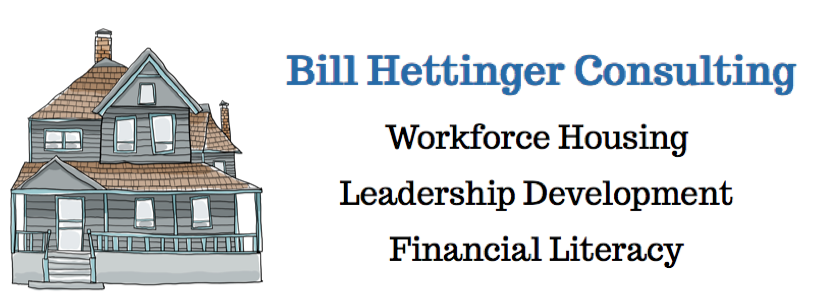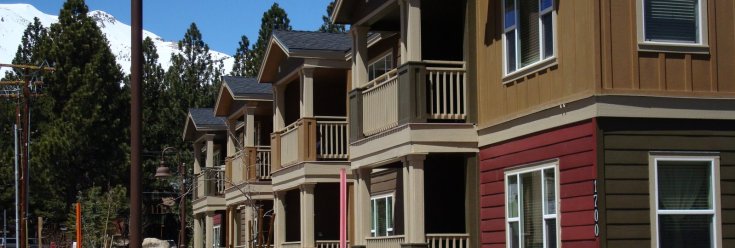Workforce Housing Solutions
Why Not Let the Market Do It?
One of the questions that I’m often asked during my housing presentations is “Why do we have to intervene and fix the housing shortage? Why can’t we just let the free market do it?”
The answer is, “The free market has failed.”
In economic terms, housing supply and demand are out of balance and the market is not able to correct this imbalance.
The market has failed because there are a series of external factors (“externalities’) – government regulations and other factors – that effect the free functioning of the market and prevent the supply of housing from growing to equal the demand.
Regulatory Externalities
Even as populations grow, government regulations have limited the supply of newly constructed housing units while at the same time increasing the cost.
Growth management and other “smart growth” regulations, aimed at controlling when and where growth occurs and moderating the effect of growth on a community, have severely limited the number of new housing units that can be built.
Land use and zoning regulations dictate what type of homes can be built on given piece of land or if homes can even be built on a particular piece of land. Regulations can also dictate the minimum or maximum size of a house, the minimum lot size, property line and street setbacks, the number of parking spaces, and even the types of landscaping allowed.
In resort communities, regulations can also govern anything from property height to the impact on the view of the neighbors.
Land use and zoning regulations drive up home prices as the cost of regulatory compliance is passed on to homebuyers. These increased costs and development restrictions drive builders toward the creation of larger, more expensive homes and away from more affordable smaller and entry-level homes.
The market is not able to effectively react to changes in demand by increasing supply.
Resort Community Externalities
In addition to the myriad of regulatory externalities, resort communities also experience externalities in the form of demand for homes from retirees and second home buyers.
Retirees and second home buyers earn their wealth in a different place (a much wealthier place) and use this wealth to purchase homes in the resort community. The retirees and second home buyers out bid the locals for available homes, driving up housing prices in the community, and displacing local residents.
Solutions
Given the externalities affecting many housing market, the solution to a housing crisis will not come from builders increasing the supply of housing in the free market, but rather from an intervention on the part of the community.
There are two primary ways in which a community can intervene in the housing market:
Changing regulations to reduce costs and allow more housing to be created; and
Providing incentives to facilitate the construction and preservation of housing within the current regulatory environment.
Regulatory Changes
State and local regulations can be changed to make more property available for housing development, speed up the approval process, and create certainty for developers. Effective regulatory changes can include:
Rezone property for residential use, particularly commercial and industrial property that is not in use or likely to be in use for commercial or industrial purposes;
Create overlay zones to allow residential and mixed use development on commercially zoned property when including workforce housing;
Speed up the approval process. Reduce the number of studies, permits and approvals required and/or consolidate the approval process to one commission, not many;
Allow staff to grant routine approvals rather than requiring board/commission approval;
Allow the creation and rental of in-law apartments as workforce housing;
Allow the development of existing non-conforming lots;
Provide rights of first refusal for tenant groups when mobile home parks and apartment complexes are sold for conversion and reuse;
Allow flexible approval and appeals for housing proposals when the community does not have sufficient workforce and affordable housing (such as Massachusetts 40-B or the Connecticut affordable housing appeals process);
Resort communities overwhelmed by transient rentals can require minimum rental terms (e.g. one month) to prevent the short-term rental of the local housing supply to tourists.
Builder Incentives
In addition to regulatory changes, communities can create incentives for the builders to build. These can include:
Reduce or waive development and impact fees for workforce and affordable housing development;
Expedited review of development applications for workforce and affordable housing projects;
Modify density, square footage, height, set back, parking, traffic, and amenity requirements for workforce and affordable housing developments;
Provide a density bonus in exchange for creating workforce and affordable units;
Provide zoning and land use modifications in exchange for the creation of workforce and affordable units;
Provide free or reduced rate utility connections for workforce and affordable housing developments;
Make unused government owned land available for workforce and affordable housing development;
Provide tax incentives for the rehabilitation of foreclosed and distressed properties;
The most important part of any strategy to create additional workforce and affordable housing in a community is to provide certainty to the developer and builders who are investing in housing development.
The workforce and affordable housing rules must be spelled out clearly and the housing incentives must be allowed by right, not subject to the review and approval of commissions and boards.
Clarity and certainty are strong incentives for a developer to look at housing development opportunities in a community.



